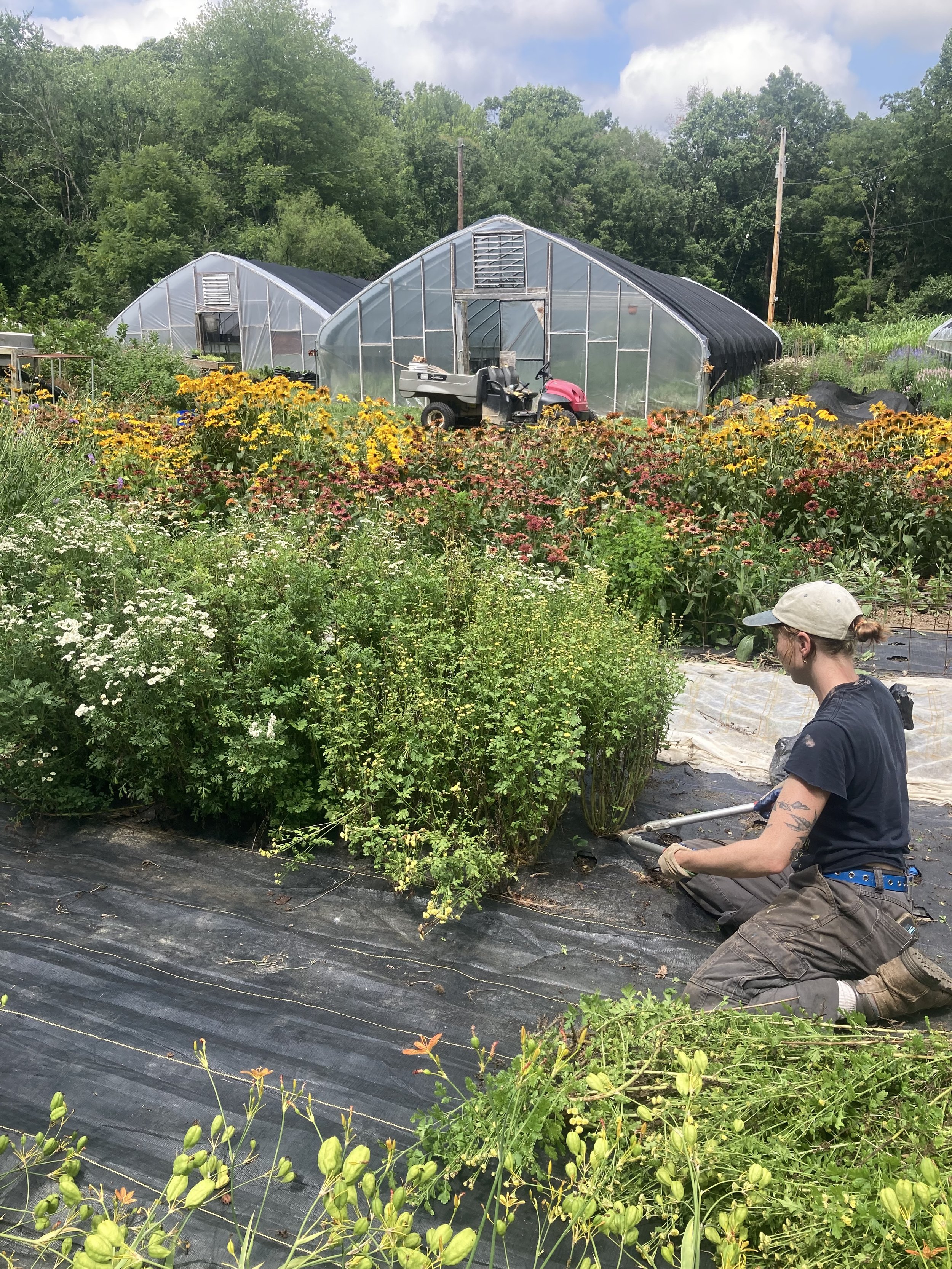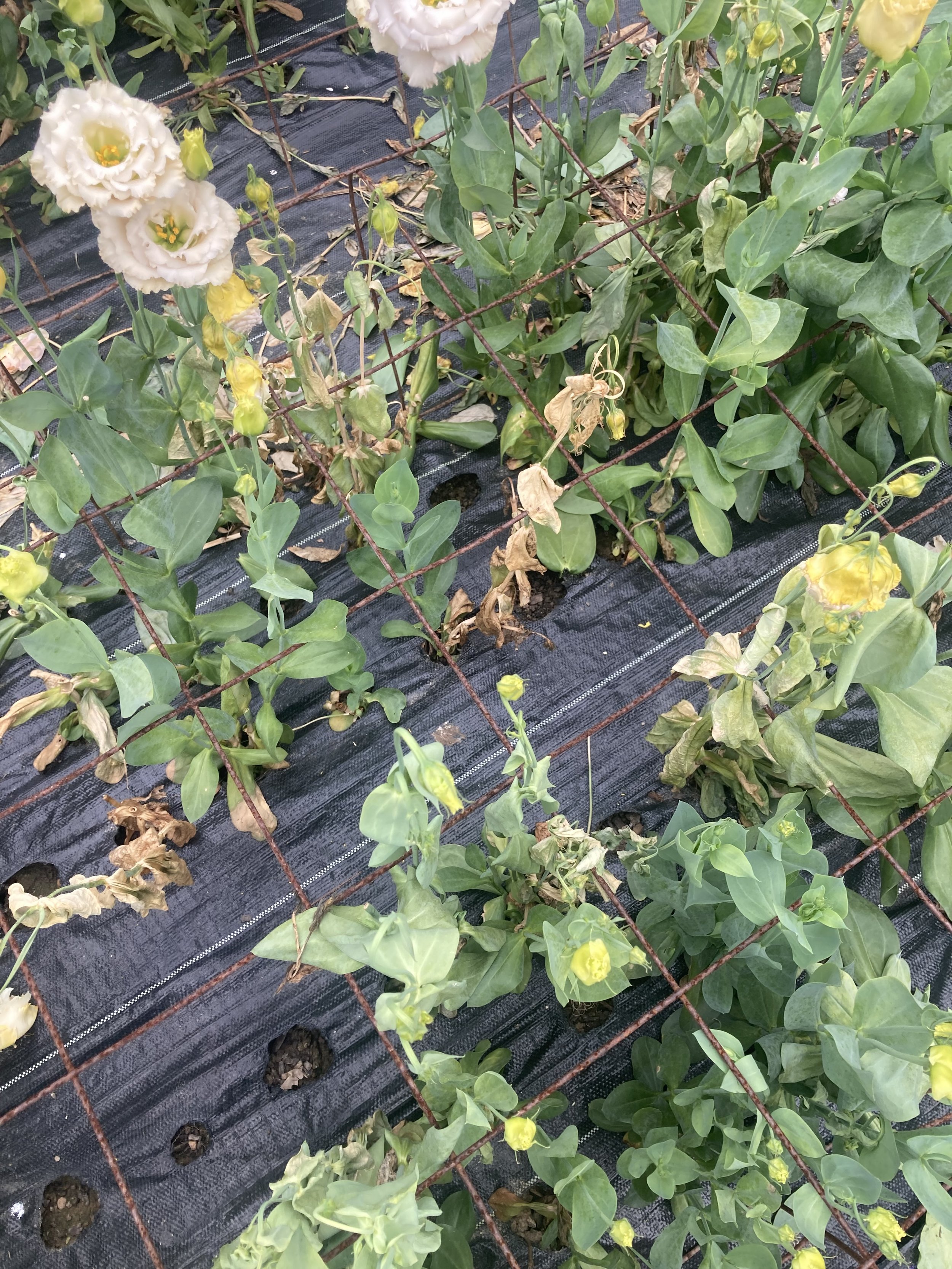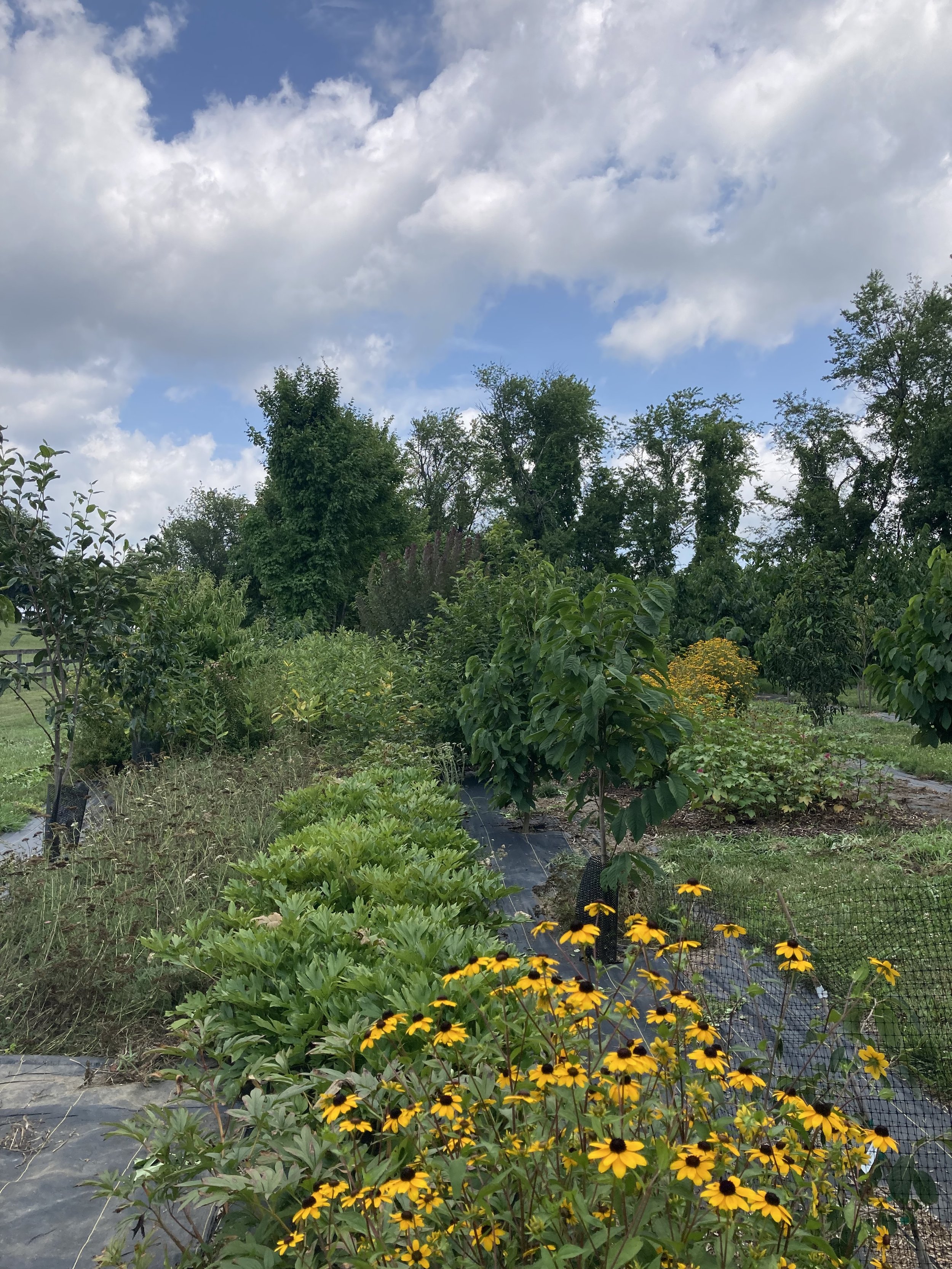Trials, Tribulations, and Successes
Meg removing spring planted feverfew from the field.
Greetings! The last week of July was quite pleasant for us here on the farm. Our to-do list is rapidly shrinking and the fields are bursting with blooms. The long-awaited dahlia harvest is beginning to roll in at a nice pace, and we're in peak lisianthus season. Cicadas sing in the background as we toil in the fields, and I'm beginning to sense that feeling that cooler days are just around the corner-- maybe once we make it through August?
This year has been hard on a lot of farmers in our area. Our Spring was wet and it was challenging to get crops in the ground, and then the heat dome descended on us, leaving us hot and dry for weeks on end. We've fortunately been able to escape many resulting crop failures, but other farmers haven't been so lucky. It's times like these that I'm grateful for the resilient systems we've built and the many observant eyes we have on the farm, constantly aware of when things may be going awry. That said, we still struggle with crops and pests from time to time.
Over the past week we've begun to notice a huge jump in the caterpillar pest population. Our issues with caterpillars seem to arise every few years, and they tend to bother particular crops. We have one type that loves to eat snapdragons, and they've really made a mark on our snap crops in recent days. We always have cabbage loopers on our ornamental cabbage, and so we begin taking preventative measures as soon as we plant it. Even so, they somehow find a way under the bug netting and onto the plants. We try to avoid spraying as much as possible, choosing to smush caterpillars by hand instead, but if the insect population reaches a critical mass, we will occasionally spray Bacillus Thuringeinsis, or BT. That said, we try to avoid spraying if at all possible, as the BT can also harm the caterpillars we love, like monarchs and swallowtails.
Another perennial struggle on the farm is fusarium, a soil-borne disease that harms many plants, but is particularly harmful to our lisianthus crop. In a newsletter just about a year ago I wrote about our struggles with this issue, and I'm sad to report that we're still struggling with it! Fusarium lives in the soil and is extremely challenging to eliminate. For this year's mitigation efforts, we experimented with new spacing to improve airflow and create breaks in the rows in hopes that the fusarium may not rip through varieties as quickly. Each month, we run a biofungicide called Actinovate through our irrigation system. Actinovate uses a microbe, Streptomyces lydicus, to combat fungus in the soil.
Sometimes this is the reality of farming: lisianthus dying of fusarium wilt
Another tact we took to improve our crop was carefully observing which of last year's varieties showed the most resistance to fusarium. We made sure to plant more of those varieties, along with some experimental plantings of new varieties we thought could be good fits. We've had some successes and some failures, and we've still lost a lot of plants, but I think that this year's crop is quite healthy compared to some of years past. Perhaps we'll see even more success next year. All I know for sure is that the lisianthus that hasn't died of fusarium wilt is absolutely stunning.Elsewhere on the farm, crops look quite healthy. We've dealt with some deer damage this year, which is a new issue for us, but it's been quite limited in scope. Fall crops are coming along beautifully and we've got tons of gorgeous blooms in store for the latter half of the season.
Despite our struggles to control fusarium, we’ve harvested some truly extraordinary lisis! We’ll be bringing plenty of them to the market this weekend, and they’ll be the star of our large bouquets this week.
We’re at the Baltimore Farmers Market this Sunday, August 4th from 7:00- 12:00!
We’re planning to bring bouquets, cosmos, dahlias eucalyptus, lisianthus, snapdragons, tweedia, rudbeckia triloba, assorted bunches of flowers and Two Boots merch.
And, of course, the Build Your Own Bouquet bar is back!
Thanks for reading, and we hope to see you at the market!
Amelia & The Two Boots crew
We weeded the perennials in the pawpaws on Wednesday and it looks lovely out there!
Hot summer Harry!





